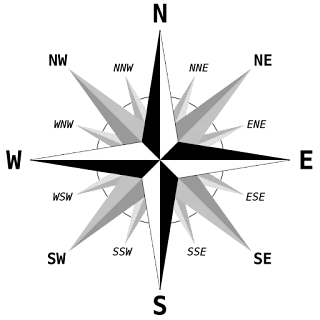DISTANCE AND DIRECTION IN MAPS
Distance ...
Maps are drawings, which reduce the entire world or a
part of it to fit on a sheet of paper. Or we can say maps
are drawn to reduced scales. But this reduction is done
very carefully so that the distance between the places
is real. It can only be possible when a small distance
on paper represents a large distance on the ground.
Therefore, a scale is chosen for this purpose. Scale is
the ratio between the actual distance on the ground
and the distance shown on the map. For example, the
distance between your school and your home is 10
km. If you show this 10 km. distance by 2 cm on a
map, it means, 1 cm on the map will show 5 km. on
the ground. The scale of your drawing will be 1cm = 5
km. Thus, scale is very important in any map. If you
know the scale, you will be able to calculate the
distance between any two places on a map.
When large areas like continents or countries are
to be shown on a paper, then we use a small scale. For
example 5 cm. on the map shows 500 km. of the
ground. It is called a small scale map.
When a small area like your village or town is to be
shown on paper, then we use a large scale that is 5
cm. on the map shows 500 metres only on the ground.
It is called a large scale map.
Large scale maps give more information than small
scale maps.
Direction...
Most maps contain an arrow marked with the letter
‘N’ at the upper right hand corner. This arrow shows
the north direction. It is called the north line. When
you know the north, you can find out other directions,
for example east, west and south. There are four major
directions, North, South, East and West
They are called cardinal points. Other four
intermediate directions are north-east (NE), southeast(
SE), south-west (SW) and north-west (NW). We
can locate any place more accurately with the help of
these intermediate directions.





Post a Comment